The type of miso that you want to make will determine the salt content you need to use.
Salty misos typically contain 12 – 15% salt. These misos take a year or more to mature; developing a deep, complex flavour. The high salt content means the can be kept indefinitely at room temperature and they will continue to mature, getting better with age. They have a powerful flavour, so not much is needed to add that umami kick to a dish. These misos are best suited to making glazes and marinades, but also make fantastic soups and stocks.
Sweet misos typically contain 6-8% salt. These misos have a more delicate flavour and are normally only take a few weeks/months to reach full maturity. Their low salt content mean that they need to be refrigerated once ready. Sweet misos are best for making soups, salad dressings or sauces.
There are also many misos that fall between these two types – combining the best of both worlds!
The majority of reactions that take place in a maturing miso are anaerobic (do not require oxygen), but a small number of reactions do require air.
For this reason we recommend that 90% of the miso’s surface is covered with weights, leaving a small area open (only covered with salt), to allow gases to escape. If these gases cannot escape, they can build up and cause other off flavours to develop.
To prevent insects or other pests from contaminating the miso a muslin or cotton fabric should be secured across the top with an elastic band or string.
Yes, a small amount of lacto fermentation happens within a maturing miso. This creates small bubbles of carbon dioxide. This is why it is important to put a weight on top of misos that are maturing for longer than 2 months (see question below)
Bad bacteria can thrive if areas of miso are exposed to the air. This is why it is important to squash all the air out of a miso when you make it. Bubbles can also form due to lacto fermentation, so it is important they are removed as soon as they form.
A weight should be added to any miso that is maturing for longer than 2 months. There is no harm in adding them to shorter ferments too.
The weight should be at least 25% as heavy as the miso being made. For example, use a 500g weight if making 2kg of miso.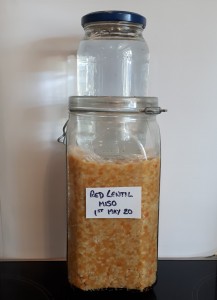
Any salt can be used to make miso, but ionised salts or those containing anti-caking agents should be avoided, if possible, as these inhibit fermentation.
You should also be careful if using large salt crystals, as these can remain undissolved in the miso. This leads to areas of the miso being under salted. We recommend using a finely ground, natural salt, like Droitwich Sprinkling Salt.
It’s normal for small amounts of alcohol to be formed within a miso, but if you find that the miso is becoming very alcoholic you have too much yeast present. This problem is more prevalent when the miso is stored at a warmer temperature.
To prevent yeasts from becoming dominant within the miso, add more salt. Yeasts aren’t very tolerant of salt, so by mixing more salt into the miso and moving it to a cooler temperature the balance should be restored to the miso.
If you have too much alcohol in your miso (see above) the alcohol can react with acetic acid to form ethyl acetate – a compound that smells of nail varnish remover. The remedy is the same as for too much alcohol in your miso – stir in more salt and move it to a cooler temperature.
The amount will vary depending on the exact conditions in which you make the miso. 1 to 2 % alcohol has been found in home-made miso. If you are at all concerned about consuming alcohol, just ensure the miso is heated to 70°C before eating, as this will ensure the alcohol evaporates.
When the miso comes into contact with air, oxidation can occur. This is completely harmless, but can affect the flavour so just remove this portion if you don’t like the taste.
If you have any more questions about making miso, please leave a question in the comments and we’ll do our best to answer it.








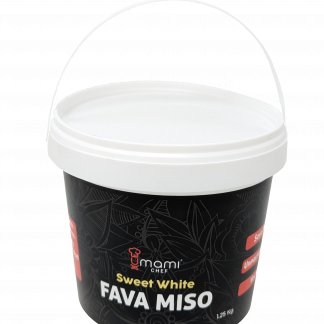

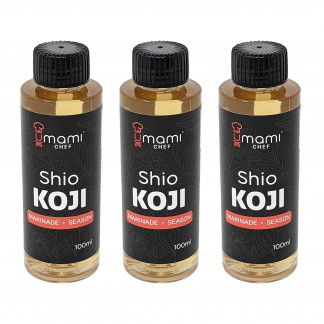

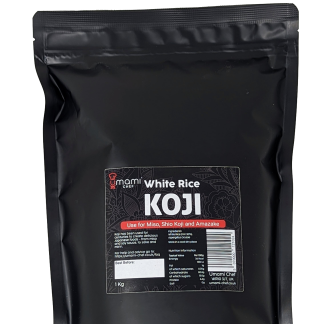


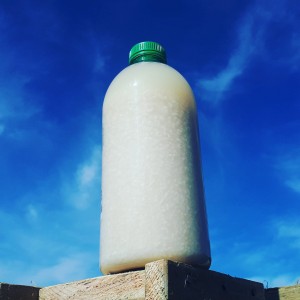

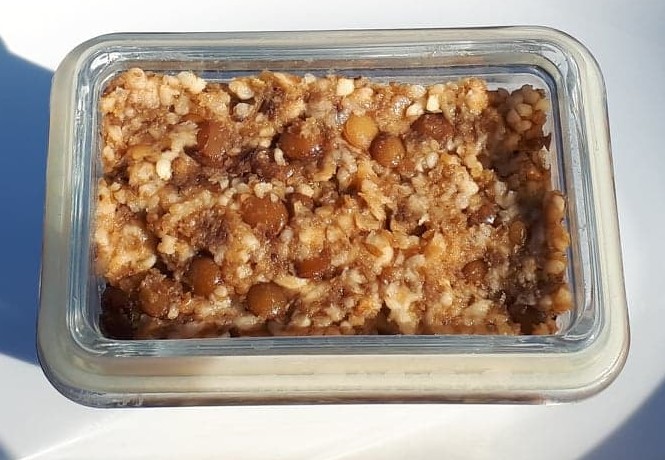
I have a question about „saikyo miso“ i read that there is often alcohol added to Saikyo Miso. Why is that and how much is normally added? Thank you very much.
Gerald
Alcohol is often added to miso to extend the shelf life. Typically, around 5% is added, but the amount varies with each producer.
Hi! Do you have any idea about how to make hemp seed miso?
A hemp seed miso isn’t something I’ve tried – but I might give it a go because your question has inspired me! Hemp seeds contain quite a lot of oil so you need to be careful not to ferment the miso for too long as the fat can go rancid during fermentation. For this reason I’d go for a quick miso – use between 5 and 7 % salt. Try to keep it as warm as possible and use quite a high proportion of koji – I’d recommend between 30 and 50%. It should be ready to eat in 4 – 6 weeks. But really it’s an experiment. Give it a try!
Hi Avanti, did you make any hemp seed miso?
Hello, curious to know if you made hemp seed miso and if so how’d it turn out? Thanks!
Hi Ed, Sorry, I got as far as buying the hemp seeds, but never got around to making it. I’ll try to find the time soon.
Hello Umami Chef, Thank you for sharing your knowledge.
I’m playing with koji-miso-amino for a little more than a year now. I’m working on a project of rescuing day old bread from artisan bakerie, by transforming them in tasty pastes. I’m growing my koji on bread than mix it with toasted bread, 4% salt + 4% brine If needed. I do 43°C fermentation for 2 weeks (Noma fielbook guide to fermentation). Did it before with great results. Today, for the second time in a row, I harvested 9 kilos of a fairly sweet (molasses, caramel like) miso, with moreless no umami; not much to do with that thing. Would you have an idea of what happened? The bread I use is clean and is made of high quality flours, the kojified bread I used was just perfect and evering in my lab is sanitized. I actually noticed that there was a lot of active fermentation, but I’ve seen that before with all kind of koji-bread mixture, since bread is highly fermentiscible, compare to soy and other beans. This is a fairly long question and I’m thanking you in advance for your care.
Have a good day!
Hi Nathalie, Sounds like a great project! Without seeing the koji/paste it is really hard to tell what has gone wrong. Is the koji growing well? Is it possible that it has overheated while growing? Or was the bread too wet/too dry for it to grow as well as in previous batches? How long did the koji grow for? It sounds as though the koji hasn’t produced the enzymes as well as before, so I’d look closely at all the conditions during koji growth, to see if any have changed.
our homemade miso is on the dry side. have been fermenting for 8 months…. is this normal?
Without seeing your miso it’s hard to know if it is too dry. If you’re worried about it you could make up a brine, with the same salt content (or higher) as your miso, and either mix it in or pour a small amount on top. Make sure you put it back in the jar well and put a weight on top after doing this. Ensure there are no air holes within the miso. I would hate for your miso to spoil after waiting 8 months already. I hope this helps, but feel free to ask any more questions if I can help in any way.
Hi there!
My miso has been fermenting for about 6 months and I noticed large air pockets building because I didn’t put a weight – now the miso is more liquid than the initial mash – is this okay?
I removed the air bubbles and put new cling film on and a weight but it’s pretty much airtight now because the weight is covering the glass rims fully with the cling film – is that an issue?
I didn’t put a new layer of salt on before the cling film. Is that a problem?
Sorry so many questions but this is my first miso and I don’t want to mess it up 🙁
Hi Julia,
If you put a weight on top of the miso it should squash all the air bubbles out and cause the excess liquid to pool on the top – this delicious pool of tamari can then be spooned off to use in other dishes.
Don’t worry about it being air tight. Ideally there should be a little amount of air able to get through, but after 6 months it will be fine without any. The same is true for the salt layer. Adding another layer of salt would probably be a good idea. but after 6 months fermenting it should be balanced enough to cope without it. If it isn’t too much of a problem I would add a salt layer, but don’t worry too much. I’m sure it will be delicious! Hope that helps!
Hello! I have a 2 year old chickpea miso and a 3 month soy miso. Neither have produced tamari and I’m not sure what I’m doing wrong since they both are moist, taste delicious, and have weights on top. Any suggestions? Thank you!
Hi Les, The amount of tamari produced is mainly down to the volume of miso made. You can produce more tamari by making your misos wetter at the start, but this has a higher risk of contamination forming. I would be proud of your delicious aged misos and not worry too much that they haven’t produced any extra liquid – or set off a 50kg batch and enjoy a bit of extra tamari!
hi chef!
I have a 4 month old soy miso and the top inch or so is starting to darken while the bottom remains as yellow as the starting color. I have it in an air tight flip top container with weights, so it’s not able to breathe excessively – I’m again in my cool basement to maintain lower temps. is this darker color cause for concern? or is the the gradual darkening as flavor develops? I snuck a smell and aroma seems to be spot on. thanks!
Don’t worry, it’s normal for miso to darken on top. It’s where it has been exposed to the air. It is safe to eat, but you can remove it before consuming it if you don’t like the appearance. That top portion is likely to be the salty from the salt cap anyway, so not normally a big loss.
Hi Chef
I made the pumpkin seed miso according the Noma Fermentation book. According to the book i should see some changes in the first month but even after two month it seems that nothing happened
Is it possible that the dried koji on rice (that I bought) is not working? What do you think i should do to wake him up? Maybe add more brine?
Thanks a lot
It’s difficult to tell without seeing pictures. It’s possible that the miso is changing in taste, but you can’t see the difference visually. What temperature are you keeping the miso at? The warmer the temperature, the faster the process occurs. If you’ve kept it above 20C (ideally nearer 30C) then you should be able to taste a difference by now.
Is it too dry? If the surface of the miso is cracking then it could be too dry. If the miso crumbles apart when squashed and is unable to hold its shape then I would add more brine. Remove the salt layer from the top, take the miso out and add more brine. Until the miso reaches as soft dough, which doesn’t ooze when squeezed. The repack into the jar.
If you don’t think it is too dry, then I’d just leave for another few months somewhere warm and hopefully it should develop into something delicious.
hi. made the simple red lentil miso. I’ve been away for a week and it seems to have died out a lot. what can I use to moisten it up? it’s started cracking and that doesn’t feel right
Sorry for the delay in getting back to you – your comment was hidden in spam 🙁 You’ve probably sorted it now. But if not, then you can remove the salt layer from the top. Mix miso with a brine (the same salt concentration as your miso – so 7g salt in 100g water for a 7% miso) until you get the required consistency(miso balls do not crack from being too dry or ooze moisture when squeezed). Then press back into jar and readd salt layer.
I have a batch of chickpea miso I started 2.5 weeks ago. There was a very small amount of blue mold in the jar (above the miso) that I removed. I also tasted it. It has a very strong cheesy flavor, think pecorino/parmesan/aged cheese. Is that normal at this stage? The flavor is not unpleasant, though a lot stronger than I expected this early on (my first time).
Hi Sam, It’s not unusual to have cheesy flavours with koji, but they normally come from things with a high fat content – for example adding nuts to a miso. It’s difficult to say without seeing/smelling/tasting it myself, but I think it is probably OK. I’d ensure the jar is clean so the mold doesn’t return (wipe with alcohol if possible) and then leave it to mature further. Hopefully the more normal flavour of a miso will develop over time.
I have a hazelnut miso I started in February 2025. it is very solid, the recipe I used called for just hazelnut flour (defatted), salt and koji). the mass is in a clean jar and hasn’t changing appearance much, beyond some blue mould growing on the outside of the mass. it tastes ok but not life-changing. There is no liquid, smell or air bubbles that I can see. I wonder if I have made some sortbof rookie error? it is my first attempt at making miso.
Hi Alison, Without seeing it, it is hard to tell. The fact it has no liquid on the surface implies that it might be too dry. I’m not a fan of nut misos as they are so hard to get right. The koji contains lipase which turns the fat from the nuts rancid – less likely in defatted flour, but still something that has happened to me. This might be the reason the recipe has deliberately kept the moisture content low. 6 months is still quite young for a miso. I’d be tempted to just leave it now and see if it gets better with a bit more time. Fingers crossed it improves for you!